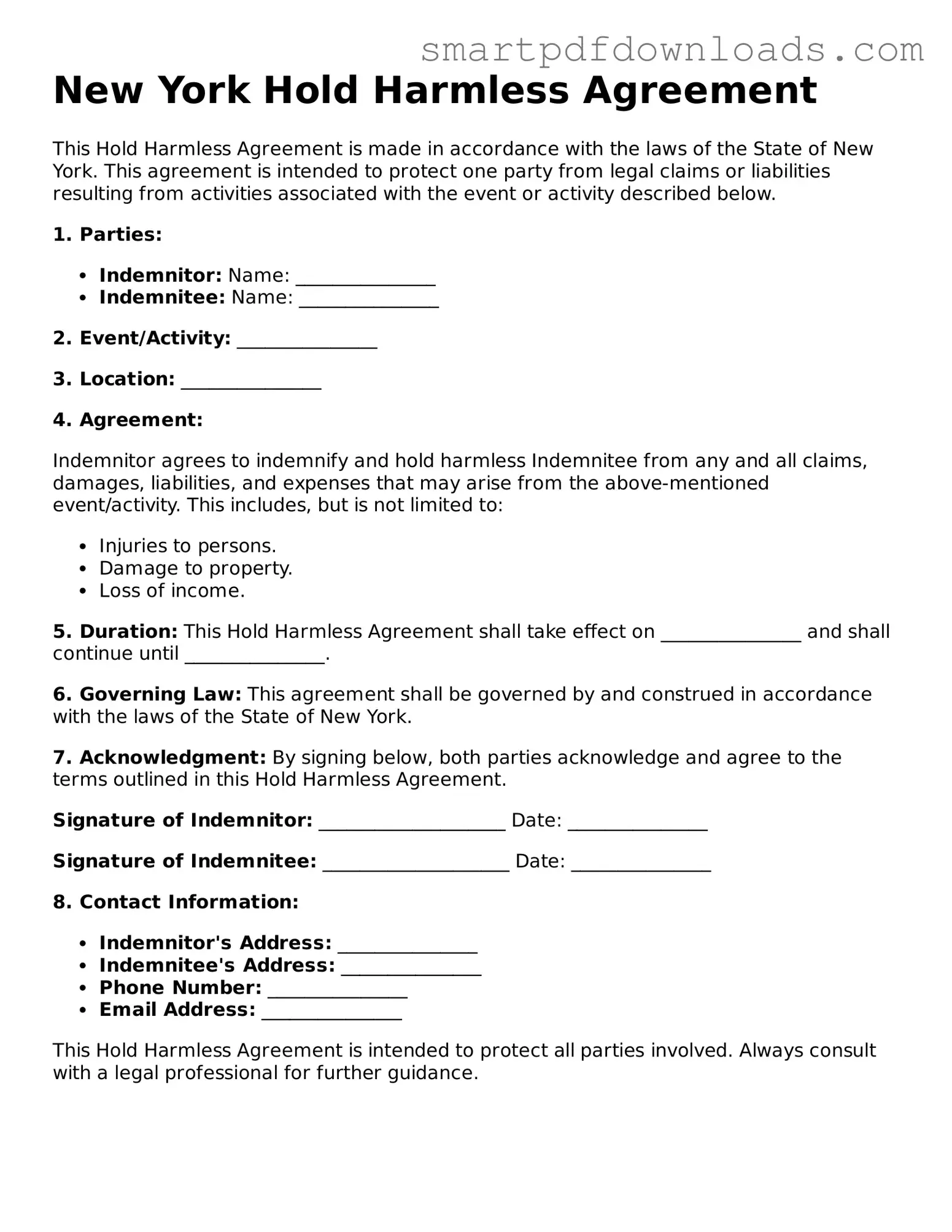New York Hold Harmless Agreement
This Hold Harmless Agreement is made in accordance with the laws of the State of New York. This agreement is intended to protect one party from legal claims or liabilities resulting from activities associated with the event or activity described below.
1. Parties:
- Indemnitor: Name: _______________
- Indemnitee: Name: _______________
2. Event/Activity: _______________
3. Location: _______________
4. Agreement:
Indemnitor agrees to indemnify and hold harmless Indemnitee from any and all claims, damages, liabilities, and expenses that may arise from the above-mentioned event/activity. This includes, but is not limited to:
- Injuries to persons.
- Damage to property.
- Loss of income.
5. Duration: This Hold Harmless Agreement shall take effect on _______________ and shall continue until _______________.
6. Governing Law: This agreement shall be governed by and construed in accordance with the laws of the State of New York.
7. Acknowledgment: By signing below, both parties acknowledge and agree to the terms outlined in this Hold Harmless Agreement.
Signature of Indemnitor: ____________________ Date: _______________
Signature of Indemnitee: ____________________ Date: _______________
8. Contact Information:
- Indemnitor's Address: _______________
- Indemnitee's Address: _______________
- Phone Number: _______________
- Email Address: _______________
This Hold Harmless Agreement is intended to protect all parties involved. Always consult with a legal professional for further guidance.
